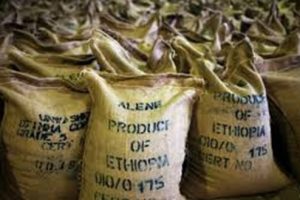BY GETACHEW MINAS
The elephant population of Ethiopia is affected by changes in land cover which are a major driving force of habitat modification. These changes have important implications for the distribution of wildlife species and ecological systems. However, information on the consequences of land cover changes in wildlife habitat and conservation at local scales is largely unknown. Understanding how the threats of changes in land cover affect wildlife habitat is critical for conservation efforts. Geographical information system and remote sensing techniques and discussions are used to assess spatial and temporal patterns of changes and their impacts on elephant population, distribution, and seasonal migration.
Studies apply satellite imagery to classify and monitor changes in land cover. Within the elephant sanctuary, agricultural land, and settlements remarkably increased in about four decades. At the same time, there was a consistent decrease in woodland and bush land respectively. The share of forest cover shows downward trend. Consequently, elephant population and distribution is on a declining trend for the past 40 years. The increasing agricultural land and settlements have become serious threats to elephant habitat, leading to its fragmentation. Human encroachment of elephant habitats, and high pressure and competition over resources deserve special attention.
Studies indicated the need for land-use plan to balance elephant conservation with human livelihood developments. Managing the impacts of changes on existing elephant sanctuaries is also an urgent matter. Loss of natural habitat due to changes in land-cover is a major threat to elephants globally. It is estimated that nearly half of the habitats have been changed into farmland and settlements, and the remaining half has been seriously degraded and fragmented. Currently, about a third of the wildlife population is vulnerable to extinction due to habitat loss, and will be worse in the future. It is expected that the human population will increase to replace the natural habitat of the wildlife with agriculture and settlement.
As the features of the land cover change, it will have a great impact on natural ecosystems, potentially reducing wildlife distribution and population further. Forest clearing has been proceeding on a massive scale, leading to widespread soil erosion, excessive evaporation and reduced biodiversity. The global natural forest cover is drastically reduced. The annual rate of deforestation in Ethiopia has increased as its population increased disproportionately. This has led to increased demand for energy, which calls for policy on energy and infrastructural developments in the sector. The recent boom in investment ventures in agriculture has led to forest fire for clearing of land. These are some of the key factors that provoked deforestation and destruction on the plant genetic resources of the country, which seriously affected the natural habitat of elephants.
A small portion of the land mass of Ethiopia is covered by natural forests. The remaining extent of land has further dropped down due to the ever increasing human population, which depends on forest resources for various purposes. This has caused a serious degradation to wildlife habitats. The change in land cover is a driving force for the alteration of wildlife habitat. This has major implications for the distribution of wildlife species and ecological systems.
A. Aryal et al found that foraging areas have shifted towards lower elevations causing conflicts between human beings and wildlife. The population of large mammals has declined due to land-cover changes. Generally, the conservation and management of elephants has faced challenges due to long migratory distance, large corridor requirement. Also, problems have been caused by the competition between human beings and elephants for large habitat outside of the conservation areas. Elephant is a crucial species in the ecosystem with important roles in ecological dynamics. Hence, its existence is important for the conservation of all elements of biodiversity in the habitat.
In contrast, in migration corridors where there are agricultural activities and human settlements, human–wildlife conflict is a major problem. This is true, as A. Mwakatobe et al revealed, where crop and property damage and related risks to life and livelihood are prevalent. Crop raiding by wild animals have led to the killings of beasts by human beings, including elephants along the migration routes. Furthermore, the decisions by managers to protect wildlife largely depend on information which is crucial towards protection of habitats. They may overlook the importance of long distance wildlife migratory and dispersal areas in favor of agricultural land. These may call for more studies on land cover change for a better understanding of its effects on conservation of wildlife.
Currently a sustainable number of elephants exist in the eastern part of Ethiopia, at Babile. This sanctuary was established to conserve the unique elephant population in the Horn of Africa. But, a huge size of the natural area available for elephants has been lost due to changes in the land cover as a result of expansion of human settlements and agricultural activities. Conservation of elephant requires a complete knowledge of the habitat preferred by the species, and land cover changes in the protected areas. These factors have significant impact on the conservation efforts as they require wide ranges of land.
Studies dealing with land cover changes and its impacts on elephant distribution and conservation are nearly absent. Understanding how changes in land-use can impact elephant habitat and conservation is therefore critical for elephant conservation efforts. Studies should, therefore, examine the dynamics of changes in land cover and examine the local consequences of these changes for elephant habitat and conservation in Babile Elephant Sanctuary (BES). This area is mainly characterized as flat to gentle slope, consisting of the sanctuary and valleys and deep gorges. Several wildlife species found in the sanctuary are elephant, black-manned lion, leopard and baboon. The sanctuary is also a refuge for the black-haired and large sized antelopes and birds.
The Babile Elephant Sanctuary (BES) is classified into six parts. These are agricultural land; bush land; forest land; woodland; human settlement; and bare land. Agricultural land consists of areas of land ploughed or prepared for crop growing. Bush land is an area with shrubs, bush and small trees in which multiple stems and branches are produced from the base of the main stem. Woodland is an area dominated by acacia species with a canopy cover of wide ranges. Bare land is an area with essentially no vegetative cover. Forest land is a type of forest found along the major perennial rivers. The vegetation is usually evergreen due to continuous water supply from the rivers. Settlement is land which is mainly covered by rural villages.
Studies were conducted on perceptions and awareness of respondents on current land-use types of BES in relation to land-cover changes, and elephant conservation. The studies focused on elephant habitat loss and human elephant conflict (HEC). The influence of humans as well as the trend of different land-use patterns for the last four decades has been recorded. The reasons why land-use types have changed were also captured. Focus group discussions were additionally done with people, who are elders that could remember events in land transformation in BES.
The results of various studies reflected that in BES, woodland covered the largest area, followed by bush land and agricultural lands. However, over the decades there was a consistent decrease in woodland and bush land respectively. The share of forest cover during the study period also showed a downward trend. But, agricultural land, bare land and settlements remarkably increased. This situation suggests that land area that was inhabited by elephants has been taken over for use by human beings. At the same time the elephant population and distribution had declined in BES. The number of elephants declined over the past four decades. Most of the people have also encountered elephants in their farms at least once in the past decades.
Studies on land cover changes, biodiversity and ecosystem trends have revealed substantial variations in BES ecosystem. Agricultural farms have expanded tremendously causing changes in BES. Also, a number of other factors were found to be responsible for the encroachment of land formerly used only for livestock and wildlife. One of these factors is the policy that is increasingly discouraging pastoralism in favor of permanent settlement. The other factor is the land ownership policy that favored individual ownership over the communal one. The big financial gains derived from mechanized farming have also encouraged expansive agriculture.
Agricultural expansion is a major threat to elephant conservation and habitat in Ethiopia. Conservation of open grazing lands for elephants was not possible due to the encroachment of human settlement. At the same time, livestock population trends over the past decades show that the number of cattle and sheep has increased in and around elephant habitats. Both pastoralists and modern farmers sought land for their livestock and for their farms. These factors have detrimental impact on the number and distribution of elephants in their habitats.
The Ethiopian Herald 22 April 2021


